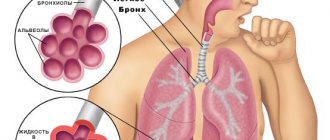In December 2019, an outbreak of pneumonia of unknown etiology occurred in Wuhan, China, and rapidly spread throughout the country within 1 month. The causative agent of this disease was identified by molecular methods and was initially named the new coronavirus of 2021. However, on February 11, 2021, the World Health Organization (WHO) announced a new name for the epidemic disease - COVID-19. The Coronavirus Research Group of the International Committee on Taxonomy later changed the code name 2019-nCoV to severe acute respiratory distress syndrome coronavirus-2 (SARS-CoV-2). Prior to this, on January 30, 2021, WHO declared the COVID-19 outbreak the sixth public health emergency, indicating that the fight against the spread of infection requires coordinated international action.
Thanks to widespread access to Internet networks, information is rapidly disseminated from all geographical regions. Researchers are obtaining data on the spread and symptoms of COVID-19, however, important details, such as the distribution of cases by age and sex, the length of the incubation period, clinical features and effective treatments remain uncertain. Therefore, we reviewed the literature, focusing on the epidemiological characteristics and clinical manifestations of COVID-19, including asymptomatic disease, acute respiratory illness (ARI), and pneumonia.
One of the dangers of the new type of coronavirus is the variety of clinical manifestations. The course of COVID-19 can occur in several scenarios, from asymptomatic carriage to pneumonia of varying severity with the development of acute respiratory distress syndrome (RDS). In the studies we described, cases of asymptomatic carriage were diagnosed based on a positive viral nucleic acid test but were not accompanied by any COVID-19 symptoms: fever, gastrointestinal or respiratory symptoms, or x-ray changes. However, transmission of COVID-19 through asymptomatic carriers (personal contact) is possible and, moreover, observed in most cases. Patients with signs of acute respiratory infections, defined as laboratory-confirmed cases of COVID-19, had respiratory symptoms, but computed tomography (CT) scans did not reveal signs of pneumonia. Patients with pneumonia, defined as cases of COVID-19, had the classic chest X-ray changes associated with respiratory symptoms. This category of patients included severe pneumonia and was characterized by the following indicators: respiratory rate ≥ 30/min, SpO2 ≤ 93% or PaO2/FiO2 ≤ 300 mmHg. Patients in this group required respiratory support.
Age and gender
Initially, the majority of reported cases of COVID-19 in Wuhan were adult patients with radiologically confirmed pneumonia. The mean ages were 49, 55.5 and 56 years in three separate studies. Similar results were observed in two recent studies, one of which included 1,099 patients from 552 hospitals in 31 provinces in China. The average age of the patients was 47.2 years, and 55.1% of patients were aged from 15 to 49 years. A second study, including 4021 confirmed cases in 30 provinces in China, found that the average age was 49 years and 50.7% of patients were between 20 and 50 years of age. Both of these studies included cases of clinical manifestations of acute respiratory infections and pneumonia. Similarly, the China Emergency Surveillance Team reported that 66.7% (n = 29,798) of 44,672 COVID-19 cases of varying severity were diagnosed between 20 and 60 years of age. In Korea, Ryu et al. found that the first 15 cases reported were between 25 and 62 years of age. Regarding elderly patients infected with SARS-CoV-2, one study found that 14.6% (6 of 41) of patients were aged ≥ 65 years, another group of researchers also indicated that among cases of pneumonia, 15.2% ( 15 of 99) patients were aged ≥ 70 years. In addition, two unconfirmed studies to date have shown that only 153 (15.1%) patients were elderly, aged ≥ 65 years in the first study and 407 (10.1%) patients were aged >70 years in the second.
According to a recent report from the CDC in China, 12.0% (n = 5326) of patients were aged ≥ 70 years. Regarding children with confirmed COVID-19, one study found 9 people over 10 years of age, representing 0.9%, while 14 (0.35%) patients aged ≤ 10 years were reported in another study . The largest study to date in China found that 0.9% (n = 416) of patients were aged <10 years. Next, Wei et al. reported that 9 children under 1 year of age were infected with SARS-CoV-2 in China. Focusing on the gender ratio of patients, in most studies, men accounted for more than half of the cases (the proportion of male patients ranged from 51.4 to 73.2%). In terms of transmission, most transmission of the virus occurs from person to person. Fortunately, to date there has been no evidence of intrauterine infection due to vertical transmission in women who have had COVID-19 pneumonia in late pregnancy. The situation with the transmission of a new infection is complicated by the nosocomial spread of SARS-CoV-2, which is a serious problem. Indeed, one study from Wuhan University Zhongnan Hospital found that 29.0% (n = 40) of those infected were medical staff, and 12.3% (n = 17) became ill with COVID-19 during hospitalization. Two other studies found that 2.1% (n = 23) and 3.8% (n = 1716) of patients were healthcare workers.
Signs of pneumonia and the danger of its asymptomatic course
09/25/2015 The disease, which is popularly called pneumonia, is actually called pneumonia. Before the advent of penicillin, almost a third of cases of this disease were fatal. But even modern medicine cannot guarantee a successful treatment outcome. About 5% of all patients cannot be saved.
From a medical point of view, pneumonia is inflammation of one or both lungs. The cause of the disease process can be fungi, bacteria or viruses. But in any case, danger to life arises from the first hours of illness.
If earlier the presence of pneumonia could be indirectly determined by such signs as a wet cough (with sputum discharge) and high temperature, then in recent years the so-called asymptomatic pneumonia has become more common. The only indicators by which the presence of the disease can be determined without a medical examination are shortness of breath and pain in the chest during deep entry. Pain occurs precisely in those places where the source of inflammation is localized.
Some symptoms of pneumonia appear rarely, usually only during the acute course of the disease. These include loss of consciousness, acute fever, and headaches. Sometimes a change in skin color is possible.
As for the cough, it may be absent, since the source of the disease is located away from the respiratory tract. It is this factor that misleads some people - there is no cough, which means there is no danger of pneumonia. In fact, such cases are even more dangerous than in the presence of a cough. After all, coughing itself is a protective reaction that helps cope with the disease.
The main danger of the disease is the difficulty of diagnosing it in time. Since the main symptoms are very similar to the flu or ARVI, people who are accustomed to self-medicate do not consider it necessary to seek medical help. Self-medication aimed at eliminating the symptoms of the disease has no effect on the source of pneumonia, and wasted time only aggravates the course of this disease.
Even for a doctor, without special tests, it is difficult to determine the presence of pneumonia. The main method for diagnosing this disease is radiography of the organs of the goud cell. It is x-rays that help to accurately determine the location of the source of infection and its presence.
In some cases, bronchoscopy may be required to accurately determine the presence of the disease and its location. This procedure is not very pleasant for the patient. A thin tube is used to examine the lungs through the nose or mouth. It is also possible to collect sputum from the lesion. If there is fluid in the pleural cavities, a puncture of the lung is performed, followed by removal of the fluid using a needle.
Carrying out tests allows us to establish not only the source of the disease, but also the causes of its occurrence. Regardless of what caused pneumonia, treatment necessarily includes antibiotics. But if previously it was possible to get by with penicillin alone, today this is no longer always enough. Bacteria and viruses have begun to get used to this remedy, and it is no longer as effective as in the old days.
Depending on the type of pneumonia, the doctor will prescribe antiviral, antibacterial or antifungal agents.
As for self-medication, it is simply unacceptable. After all, without research it is impossible to establish what exactly caused the disease and, as a result, it is impossible to eliminate the cause.
Risk groups for developing pneumonia
Although pneumonia is possible in any person, there are risk groups among whom inflammation occurs much more often, has a more serious severity and unfavorable prognosis (especially if treatment is delayed). The category of people most susceptible to complications of respiratory pathologies with the development of pneumonia and respiratory failure includes:
- infants in the first weeks of life, premature babies, low birth weight babies;
- elderly people (over 65 years old);
- persons with chronic diseases of the bronchopulmonary system (COPD, bronchitis, emphysema, alveolitis, asthma) or pathologies of the cardiovascular system;
- patients with severe liver and kidney damage and alcoholism;
- people with metabolic and endocrine disorders (diabetes, obesity, thyroid and adrenal problems);
- children and adults with primary and secondary immunodeficiencies;
- cancer patients;
- persons with serious autoimmune disorders, especially those receiving immunosuppressive drugs.
In addition, lifestyle, diet, constant lack of sleep and chronic stress, which undermine the functioning of the immune system, have a significant impact. Source: Cilloniz C, Martin-Loeches I, Garcia-Vidal C, San Jose A, Torres A. Microbial Etiology of Pneumonia: Epidemiology, Diagnosis and Resistance Patterns // Int J Mol Sci. 2021 Dec 16;17(12):2120. doi: 10.3390/ijms17122120..
Prevention
It consists of practicing a healthy lifestyle, proper nutrition, and, if desired and there are no contraindications, hardening, i.e. Maintaining a strong immune system in general can protect you from the risk of this disease.
In addition, it is important to be attentive to your own health - pneumonia often acts as a serious complication against the background of a common ARVI or flu, if they are not treated in time.
If, however, you or your loved ones experience symptoms of pneumonia, we recommend that you consult a specialist without delay. Do not forget that in some forms, pneumonia can be dangerous not only for the patient, but also for others with reduced immunity due to the possibility of infection.
You can sign up for a consultation with a specialist through a special form on the website or by phone.
Features of community-acquired pneumonia
Determining the pathogen is often a difficult task due to the difficulties in obtaining a substrate for diagnostics and often the lack of sufficient time for additional diagnostics. In addition, patients often develop a mixed infection.
The most common causative agent of bacterial infection (30–50% of cases) is the pneumococcus Streptococcus pneumoniae. The so-called atypical strains, undetectable by bacterioscopy and culture on conventional nutrient media, account for up to 30% of cases of the disease (Chlamydophila pneumoniae, Mycoplasma pneumoniae, Legionella pneumophila). 3–5% of cases of bacterial pneumonia are associated with rare pathogens (Haemophilus influenzae, Staphylococcus aureus, Klebsiella pneumoniae, other enterobacteria). Extremely rarely, community-acquired pneumonia can be caused by Pseudomonas aeruginosa (in the presence of bronchiectasis or in patients with cystic fibrosis).
Viral forms of CAP are caused by respiratory viruses: influenza virus, coronaviruses, rhinosyncytial virus, human metapneumovirus, human bocavirus. In most cases, respiratory viruses cause mild pneumonia with a self-limiting nature, however, in elderly and senile people, in the presence of concomitant bronchopulmonary, cardiovascular diseases or secondary immunodeficiency, the development of severe, life-threatening complications is possible.
Secondary bacterial pneumonia can be a complication of a primary viral infection of the lungs or an independent late complication of influenza.
Main symptoms
The clinical picture, which is most often observed in patients with pneumonia, includes the following components:
- increase in body temperature above 38C,
- severe cough with sputum production,
- chest pain when coughing or taking a deep breath,
- pale skin,
- weakness,
- drowsiness.
Some types of pneumonia cause joint pain, headaches, and red spots on the neck and face. During the examination of the patient, wheezing in the lungs is clearly audible during auscultation. Based on this factor, the doctor has grounds to prescribe additional examination methods, which include radiography.
What tests and examinations should be done if pneumonia is suspected?
The diagnostic algorithm for suspected pneumonia includes anamnesis, assessment of complaints, physical examination, a set of laboratory and instrumental studies, the scope of which is determined by the severity of the disease, as well as the presence and nature of complications and concomitant diseases.
Outpatients with suspected pneumonia are prescribed a complete blood count (with pneumonia, an increased number of leukocytes, an increase in the number of band neutrophils and ESR), pulse oximetry (a diagnostic procedure that allows you to determine blood oxygen saturation) and a plain radiography of the chest organs in frontal and lateral projections. Pneumonia cannot always be detected by conventional chest X-rays, so doctors may perform an X-ray computed tomography (CT) scan on patients with suspected pneumonia. In hospitalized patients, the range of recommended tests additionally includes biochemical blood tests and electrocardiography.
Symptoms, treatment and prevention of pneumonia. Infographics Read more
Drugs for the treatment of pneumonia
It is important to remember that pneumonia cannot be treated on your own. This disease is too dangerous to be treated at home or to be carried on your feet. Treatment of pneumonia is carried out under the supervision of a general practitioner or pulmonologist in a hospital setting.
The main method of treating pneumonia without fever and cough is antibacterial therapy. The patient is prescribed antibacterial drugs for a course of 10-14 days. Most often, antibiotics are administered intramuscularly.
Additionally, expectorants are prescribed to thin and remove mucus from the lungs. Bronchodilators are used to eliminate shortness of breath. Inhalations have a good therapeutic effect. With the development of asymptomatic pneumonia, various warming of the chest, baths, saunas, and hot baths are strictly prohibited.
A patient with pneumonia should eat well, drink enough fluids, and take multivitamins. Some time after starting to take antibiotics, physiotherapeutic procedures are included: massages and therapeutic breathing exercises.
Get treatment at the Yusupov Hospital
Pneumonia without fever is a dangerous pathology that requires immediate treatment, which can prevent the development of disastrous consequences. At the first symptoms of the disease, you must seek qualified medical help.
Timely and well-chosen therapy guarantees a favorable prognosis for the disease. Successful treatment of pneumonia without fever is carried out at the Yusupov Hospital. The clinic's therapists and pulmonologists have extensive experience in diagnosing and eliminating various types of pneumonia. The Yusupov Hospital provides patients with comfortable hospital rooms, where they have everything they need for a quick recovery.
The Yusupov Hospital is located near the center of Moscow and provides care to patients around the clock. You can ask for advice, make an appointment and get recommendations from specialists by phone.
Reasons for the development of the disease
Pneumonia begins as a result of damage to the respiratory system by a bacterial, viral or fungal infection. Most often, pneumonia is bacterial in nature. Among the causative agents of pneumonia, the following main bacteria are distinguished:
- Pneumococcus,
- staphylococcus,
- streptococcus,
- mycoplasma.
Pneumonia can develop against the background of colds, flu, bronchitis; or begins as an independent disease. People with weak immune systems are most at risk for pneumonia. The disease is more common in childhood and old age. The presence of immunodeficiency states and chronic diseases contributes to the development of pneumonia. In smokers and people who abuse alcohol, the disease is more severe and complications are more likely to develop. This is also associated with a decrease in the body's protective functions due to the toxic effects of alcohol and tobacco.











